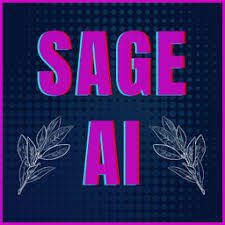GPT-4 vs DALL-E 3: Comparison, Features, and How to Use Them Together
Introduction: Exploring the World of AI Models
Welcome to our deep dive into the world of AI models, where we compare GPT-4 and DALL-E 3. In this article, we’ll explore what makes these models unique, highlight their key features, and show you how to effectively use them together. Whether you’re a tech enthusiast, a content creator, or just curious about AI, this guide is for you.
AI technologies are evolving rapidly, making our lives easier and more interesting. GPT-4, developed by OpenAI, is a powerful language model that can understand and generate human-like text. On the other hand, DALL-E 3, also from OpenAI, can create stunning images from textual descriptions. With advancements like these, understanding and utilizing them can open up many new possibilities.
In this article, you’ll learn about:
- The main differences between GPT-4 and DALL-E 3
- The key features of each model
- How to use GPT-4 and DALL-E 3 together effectively
- Practical tips and common questions
Comparing GPT-4 and DALL-E 3
Let’s start by understanding the basic differences between GPT-4 and DALL-E 3.
What is GPT-4?
GPT-4 is a generative pre-trained transformer model designed to process and generate text. It’s the latest iteration of the GPT series, known for its ability to produce coherent and contextually relevant content. Here are some of its key features:
- Multimodal Inputs: GPT-4 can accept both text and images as inputs, providing more context and improving its responses.
- Enhanced Accuracy: It has higher accuracy in generating text, reducing the chances of errors or “hallucinations.”
- Better Alignment: Improved ability to follow user instructions and generate appropriate content.

What is DALL-E 3?
DALL-E 3 is an AI model specifically designed to generate images from textual descriptions. It can create detailed and high-quality visual content based on the input it receives. Key features include:
- Improved Image Quality: DALL-E 3 produces images with greater realism and detail.
- Complex Prompt Handling: It can handle more complex prompts, creating sophisticated and nuanced images.
- Creative Freedom: Users can generate diverse images based on various styles and descriptions.

Using GPT-4 and DALL-E 3 Together
One exciting aspect of these models is how they can complement each other. Here are some practical ways to use GPT-4 and DALL-E 3 together:
Create Engaging Content
Imagine using GPT-4 to generate a compelling story and then employing DALL-E 3 to create illustrations that bring the narrative to life. This combination can revolutionize storytelling for writers, marketers, and educators.
Enhance Presentations
Use GPT-4 to draft informative content for a presentation. Then, employ DALL-E 3 to generate visual aids that make the presentation more engaging and easier to understand.
Generate Custom Visuals for Articles
Bloggers and content creators can write detailed articles with GPT-4 and generate complementary images using DALL-E 3. This approach enhances the overall appeal and readability of the content.
Practical Tips for Using GPT-4 and DALL-E 3
- Be Clear with Prompts: The more detailed and precise your prompts, the better the output. Describe exactly what you need.
- Experiment with Styles: Don’t hesitate to try different styles and approaches. Both models offer a wide range of creative possibilities.
- Refine Outputs: It’s okay to fine-tune and iterate on the results. Adjusting your prompts can help improve the quality of the outputs.
Frequently Asked Questions
1. Can I use GPT-4 and DALL-E 3 together for commercial projects?
Yes, you can use both models for commercial projects. However, be sure to review OpenAI’s policies and licensing agreements to ensure compliance.
2. How do I ensure the accuracy of GPT-4’s output?
Providing clear and detailed prompts can significantly enhance the accuracy of GPT-4. Additionally, reviewing and editing the content generated ensures it meets your standards.
3. What are some common issues with DALL-E 3, and how can I overcome them?
Sometimes, DALL-E 3 may produce images that don’t perfectly match the prompt. Experimenting with different prompts and being specific about your requirements can help improve the results.
4. Are there any limitations to these models?
Both GPT-4 and DALL-E 3 have their strengths, but they aren’t perfect. GPT-4 might occasionally generate less factual or coherent text, and DALL-E 3 can sometimes create less detailed images. Using them together and refining inputs can mitigate these issues.
5. How can I get started with these models?
Sign up for an OpenAI account to start using GPT-4 and DALL-E 3. Explore their documentation to understand their capabilities and experiment with different prompts to see what works best for you.
Conclusion: Embrace the Future of AI
GPT-4 and DALL-E 3 represent significant advancements in AI technology. By understanding their features and knowing how to use them effectively, you can unlock new creative possibilities. Whether you’re creating content, enhancing presentations, or exploring new ideas, these models offer incredible tools to help you succeed.
Remember, the key to getting the best results is experimentation and refinement. So dive in, explore, and see how GPT-4 and DALL-E 3 can transform your projects.

